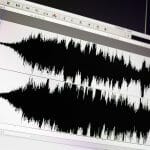Articles
14 Ways To Get Better Mixdowns
Written by Jesse Scott
Do you struggle with mixdowns? If so, you’re not alone. Many producers and audio engineers, fledgling and seasoned alike, do as well. Of course, mixing music “the right way” is relative, and people have varying opinions on what they think sounds good. But there are a few basic rules that most great mixes adhere to, regardless of what style or genre they originate from.
Many times, the majority of mix problems people encounter are directly correlated to their mixing environment, but there are a few additional tricks that I’ll be discussing here, later on, that will help take your mixes to the next level.
So let’s get started!
- Buy a good pair of studio monitors. If you can’t hear music the right way, then you’re always gonna be shooting in the dark. Period. A flat frequency response is a must. Quality monitors have come down in price over the years. If you can afford one, get a matching subwoofer. Headphones are great if you want to hear the minute stereo characteristics of your song, but they’re not something you should mix in 100% of the time.
- Set your studio up in the best configuration possible, according to the space you have available. Putting a pair of studio monitors in the corner of your room isn’t gonna cut it. If you want achieve world class mixes, you have to set your room up correctly, or else you’ll constantly be running into phasing/imaging issues.
- Buy or build proper acoustic panels for your studio. Fabric, egg crates, or foam won’t help you. If you wanna tackle your sound problems, you have to go the extra mile. Nothing has improved my mixes more than building a professional set of wall and ceiling panels. It’s not as expensive as you might think. For about $600 and a bit of elbow grease, you can get your studio sounding better than you’ve ever heard it before.
- Listen to a ton of music so that you can compare it against your own mixes. I used to avoid this like the plague. Mostly because I was disappointed with how my music sounded, compared to tracks I held in high regard. This was a huge mistake. Lately, I’ve been forcing myself to A/B every 5 minutes or so, during both the creation and the mixdown process. It’s become second nature at this point, and it’s paid off in spades.
- Make sure to constantly mono your mixes. One of the hallmarks of a good mixdown is when the majority of it’s sonic energy “floats” smack dab in the middle of your speakers, like a ghost. If you mono your mix, and most of the sound disappears, that means you’re running into phasing issues. I have a box that my studio monitors connect to (The Big Knob – made by Mackie). It controls the volume of my speakers, but it also has a little button that monos the mix. If you don’t own a device like this, then use a plugin within your DAW on the Master channel (at the end of the plugin chain). Try monoing the tracks you A/B with too. This will give you a better sense of how other people record their music.
- Don’t mix loudly. Mixing loudly will not only fatigue your ears, but you’ll be fooling yourself into thinking that your mix rocks. The nominal volume to monitor music at is about the same level you’d watch TV. Once in awhile, you can turn your mix up louder to see how it sounds, but keep it at a normal level for the majority of the time. Also, make sure to take frequent breaks to reset your ears. Nothing ruins a mix faster than tired ears.
- Listen to your mixes on as many sound systems as possible. The “car test” is always the defining factor for whether or not I’ve nailed a mix. The reason the car is such a de facto standard for so many people, is that it’s a common denominator. If your music sounds good on the smallest (or worst) system available, then it’s probably a decent mix. Earbuds are a good test too. It’s what most people listen to music on these days.
- Start with good source material. We’ve all heard the saying “You can’t polish a turd.” Well, there’s a lot of truth in that statement. If you don’t start with professional grade source material, then there’s not a whole lot that mixing is gonna do for you in the end. It’s always better to start with big sounds that you can subtract from, rather than having thin sounds you try to bulk up later on.
- Don’t always reach for a limiter when you want to achieve loudness. One of the biggest mistakes fledgling producers make, is using a limiter on everything to make their tracks louder. I assure you, nothing makes your mix sound more lifeless and/or fatiguing. Sure it might be loud, but so is a jack hammer (and we all know how pleasant that is to listen to.) Learn to use compressors, overdrive and tape saturators correctly. They’ll help with volume and add character to your source material to boot.
- Learn to use sidechain compression. Having a problem getting your drums to pop through your mix? Try sidechaining some of the music tracks with your drums. This will create the illusion that all of your sounds are popping through. You can do this with a lot of different material. Can’t get the vocal to cut through the guitars? Try sidechaining the guitars with the vocal. Don’t overuse it though, because it’s not a fix-all solution.
- Filter your audio tracks. Having trouble getting your bass to sound tight? Try going through all your audio tracks and using a high pass filter to get rid of any low frequencies that might be competing for head room. You’d be surprised at how much low end rumble there is on tracks you’d never expect would have it. Don’t filter too much low end out though, or you’ll cut into the meat of your sounds. My general rule of thumb is any frequency below 40 hz can be cut completely. Everything above that, you’ll have to experiment with.
- Mono everything in your mix below 160 hz. Bass doesn’t work very well in stereo. In order to get tighter mixes, you’ll want to make sure that the lower frequencies of your track are coming straight out of the middle of your speakers. I use Izotope Ozone Imager or Brainworx BX Control to do this. Give either of these a try on your Master channel and see how it instantly changes your mixes for the better.
- Group your tracks. Putting your tracks into groups is a must. Not only from an organizational standpoint, but also as a way to control a group of sounds all at once. Sometimes a little bit of compression on a drum group sounds better than trying to compress all your drums separately. Try playing around with this to see if it’ll work for you.
- Learn different methods for stereo widening. Once you have the bulk of your song in the middle of the speakers, you’ll want to go back and make some of your sounds a little wider. A lot of people go for stereo widening plugins as a default solution, but this can create unwanted phasing issues. Try panning to start with (auto-panners are great), as well as reverbs or delays that create a wider stereo image. Remember to keep monoing your mix so that you don’t lose any energy. This is a very delicate process, and it takes time to master. Don’t overdo it.
A great book that helped me tremendously with my mixes is “Mixing With Your Mind” by Mike Stav. I can’t recommend this enough.
You can also check out Music Studio Setup and Acoustics as well as Audio Recording Techniques on lynda.com.
“Learn the rules like a pro so you can break them like an artist” – Pablo Picasso





















